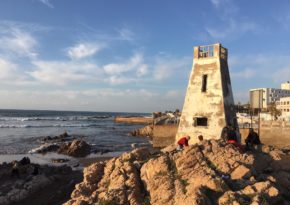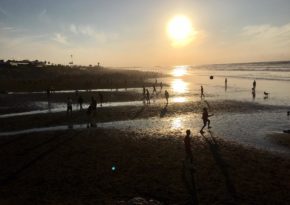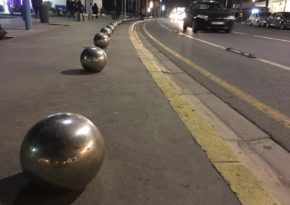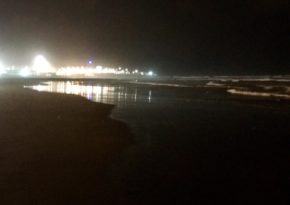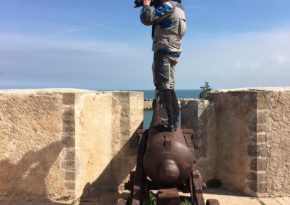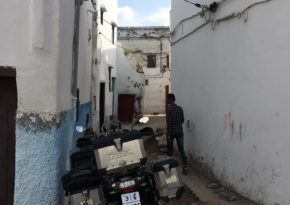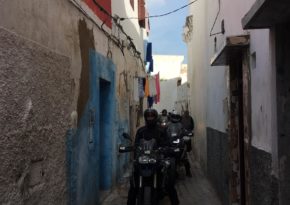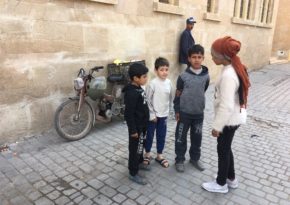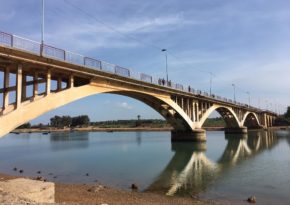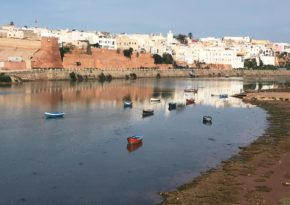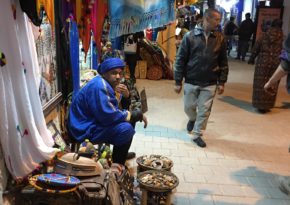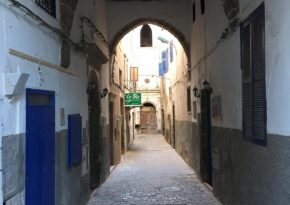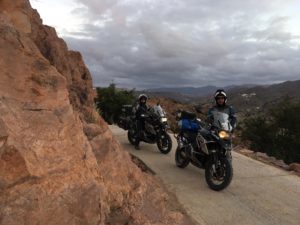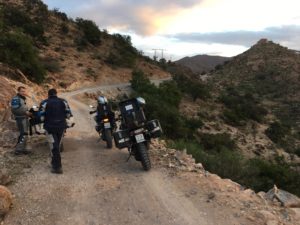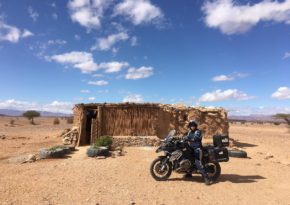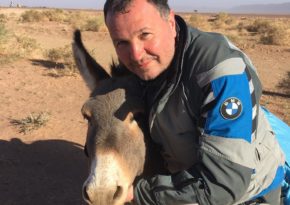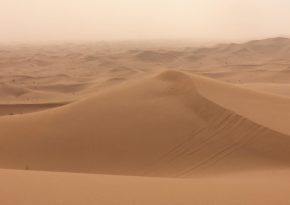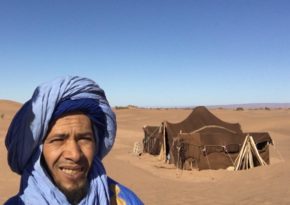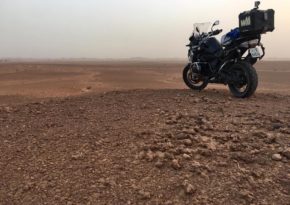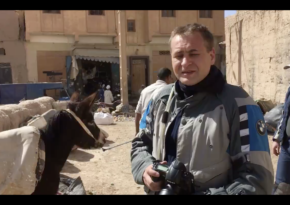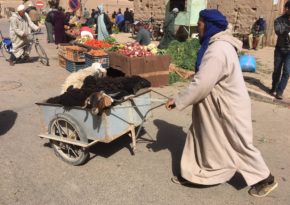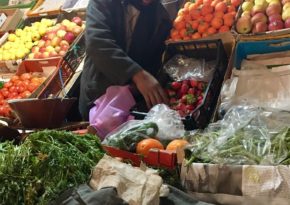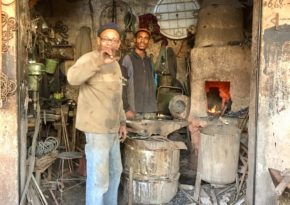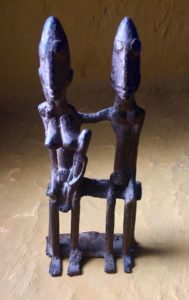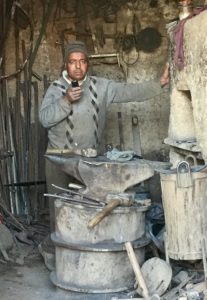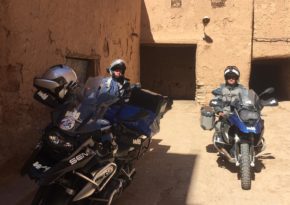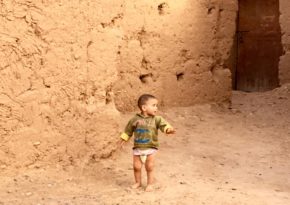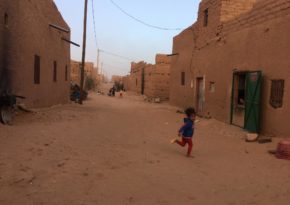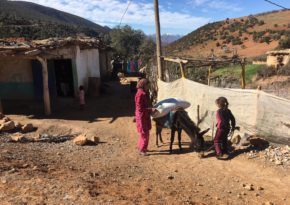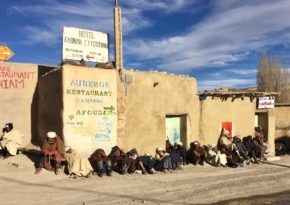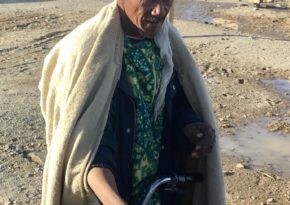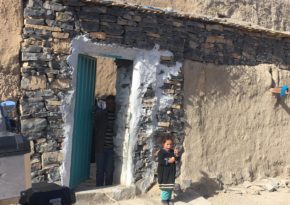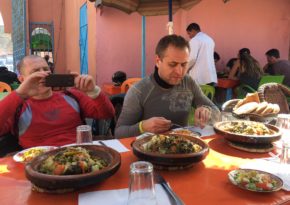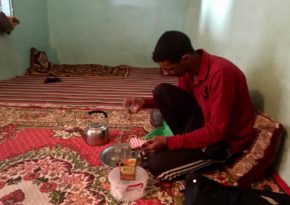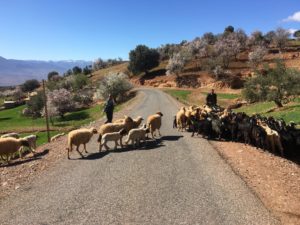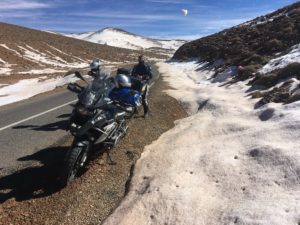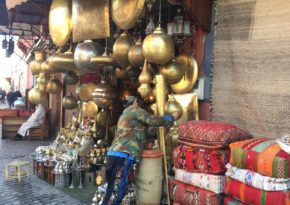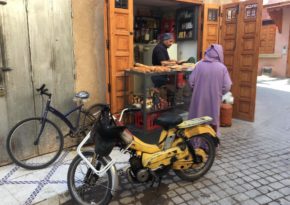Morocco, 2018. A motorbike journey.

"Why do you have the rivers that wide?
Why do you have the mountains that high?"
This catchy nursery rhyme was playing in my head on and on for all the six hours of the flight, until the Moroccan Airlines Boeing 737 landed at Casablanca Airport. If I had been asked what I knew about Morocco a couple of months ago, I would have answered that it is a country, which is located somewhere in Africa, the Moroccans live there, there is also a desert, camels, tangerines and a city with an exotic name Marrakesh, about which a cheerful song was written by Goombay Dance Band and it was very popular in 80s. Perhaps, my answer would not have differed much from the description of Brazil performed by Donna Rosa d'Alvadorez in the famous Soviet comedy "Hello, I'm your Aunt!"
As always, the idea to go on a motorbike trip across this mysterious country came up to me unexpectedly. I found out by chance that a chill company of my friends-BMW-lovers was going there, so I asked them if I could join. That's how I tagged along with them, so to speak.

Morocco welcomed us with warm and sunny weather. I remember a clean modern airport, a long queue for passport control, which consisted of people of all races and nationalities of the planet, a taxi park... And a few hours later, having filled in all the paperwork for renting the motorbikes, we were already seeping through the dense traffic jams along the narrow streets of Casablanca. There are 9 days of adventure and adrenaline charge ahead!
Casablanca is one of the largest megapolises in Africa but, in general, it didn't surprise us by anything. It is a kind of a huge European city with an oriental flavour. There you can see a lot of luxury hotels, restaurants, shopping malls and experience dense traffic, jammed with cars of different class and cost. The audience is quite motley as well. Some beggars and annoying sellers may follow you along the sidewalk and beg you to buy any stuff that they offer. But there you can also meet respectable men and women, who are having a talk while sitting at the tables of expensive restaurants overlooking the ocean. The world's second-tallest minaret, known as Hassan ll Mosque, did not make any special impression on us either (well, at least, its look, since we didn't visit it inside). Only a thin green laser beam, coming from the top of the minaret and piercing the night sky above the city, reminded the residents that they could not hide from the all-seeing eye of Allah even behind stone walls. Our evening promenade around the city ended with a return to the hotel at about midnight. Tomorrow we are going to the south of Morocco.
There is about a 400 km distance from Casablanca to Esaueira. It can be covered along the motorway in four hours, but you won't see anything interesting. As an alternative, you can follow a good asphalt road along the Atlantic Ocean seaboard and have lots of fun! A narrow path was leading us south, skirting the coastline. Many times we went up the high cliffs, which offered a gorgeous view of the ocean, and descended to an endless sandy beach. Sometimes we were riding so close to the steep shore that I had to brush off the drops from the visor because of the breeze from the waves crashing against the rocks.
El Jadida, Oualidia, Beddouza, Safi… these small ancient cities located on the Atlantic coast struck us with their indescribable oriental flavour. Many of them have preserved the authentic architecture and lifestyle, which did not seem to have changed over the past few hundred years. The powerful fortress walls border the old part of the city, which is called "Medina" here. There you can see narrow crooked streets paved with stone; brown walls of houses; arches; small windows and low cracked wooden doors; donkeys, carrying carts with luggage, and a market of all sorts of things: from oriental sweets and delicious hot cakes (for one dirham) to expensive carpets and handmade leather goods.
Everything is so unusual and attractive! Frankly speaking, all these hundreds of photos taken by us will be unlikely to convey even a small part of that oriental spirit, into which we were able to immerse for a few hours that day!
Esaueira is one of the oldest towns on the Atlantic coast of Morocco. The streets of the Medina are crowded since the very early morning and swarms of fat seagulls circle over it with the peculiar cries.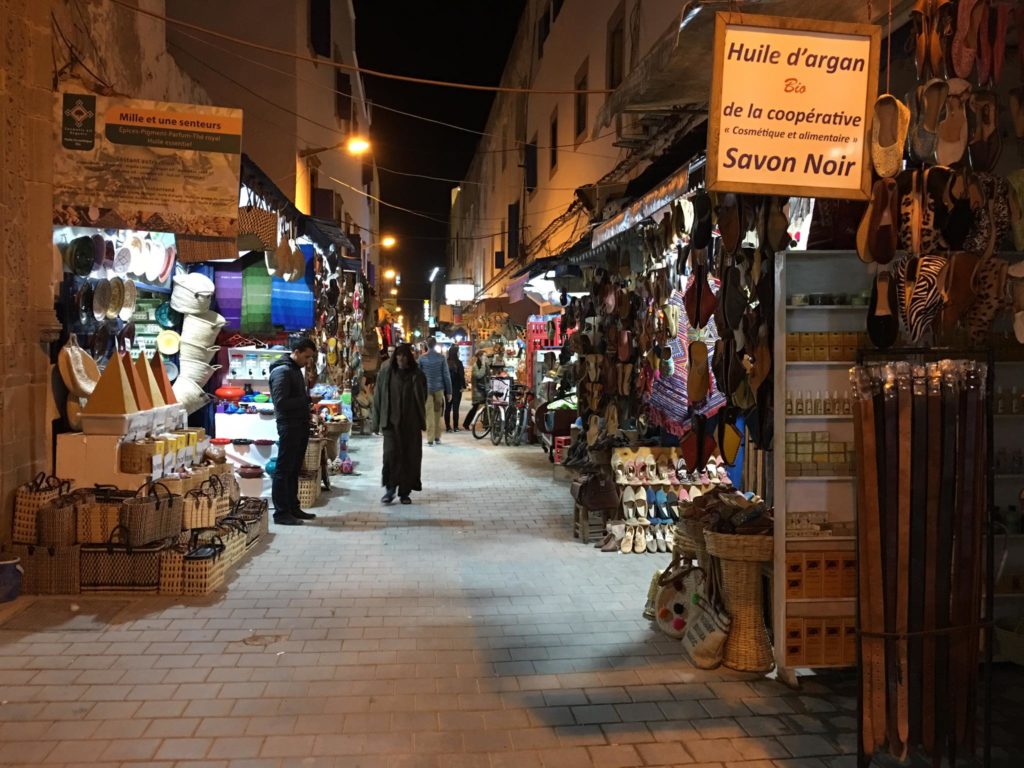
Doors and shutters of small shops start opening and sellers lay out their goods on street stalls. Donkeys carry carts with goods, clacking their hooves upon the pavement and the city gradually comes to life… We were wandering along its alleys, peering into open doors, and under low stone arches, which connected neighboring houses. There were a lot of cats, which followed us with a curious look, as well as people. There is also a huge fish market in Esaueira, where you can buy everything that had been swimming in the ocean only a day before. But, unfortunately, we did not get to it. If you happen to be in Morocco, make sure to visit this city!
In the early morning we said goodbye to the beautiful city of Esaueira and rode along the ocean coast to the fairly decent modern city called Agadir.
Having refueled the empty tanks, we rode through the town and proceeded further across the country to the east. We chose the category of "walking route" on Maps.me and went along narrow paths by villages, some abandoned greenhouses, pushing through thickets of three-metre cacti and approaching the mountains.
A steep serpentine led us to the pass. It was so beautiful!!! And the weather was great. After sunset we arrived in the small town named Tafraut, where we were already being waited for a chic dinner and a warm bed in a cozy small guesthouse. We spent the evening at the outdoor terrace, talking to Olga, our compatriot, who appeared to be a very easy-going and jolly woman (and she was also the wife of the owner of the hotel, whose name was Mustafa). That was a wonderful day!
Morocco, 2018. Tafraout → Teesside.
We said goodbye to the kind hosts and left in the morning to the eastern direction for Teesside.
The sky was overcast and 15 minutes later a cold rain began. We went up to the pass 1700 m high and the temperature dropped to +6°C. A piercingly cold wind was blowing and the weather was very nasty. In two hours we got wet and soaked to the bone! But as soon as we descended to the valley, the sun looked out and everything around transformed, became colorful. We saw incredibly beautiful chocolate mountain ranges, which were similar to a layer cake.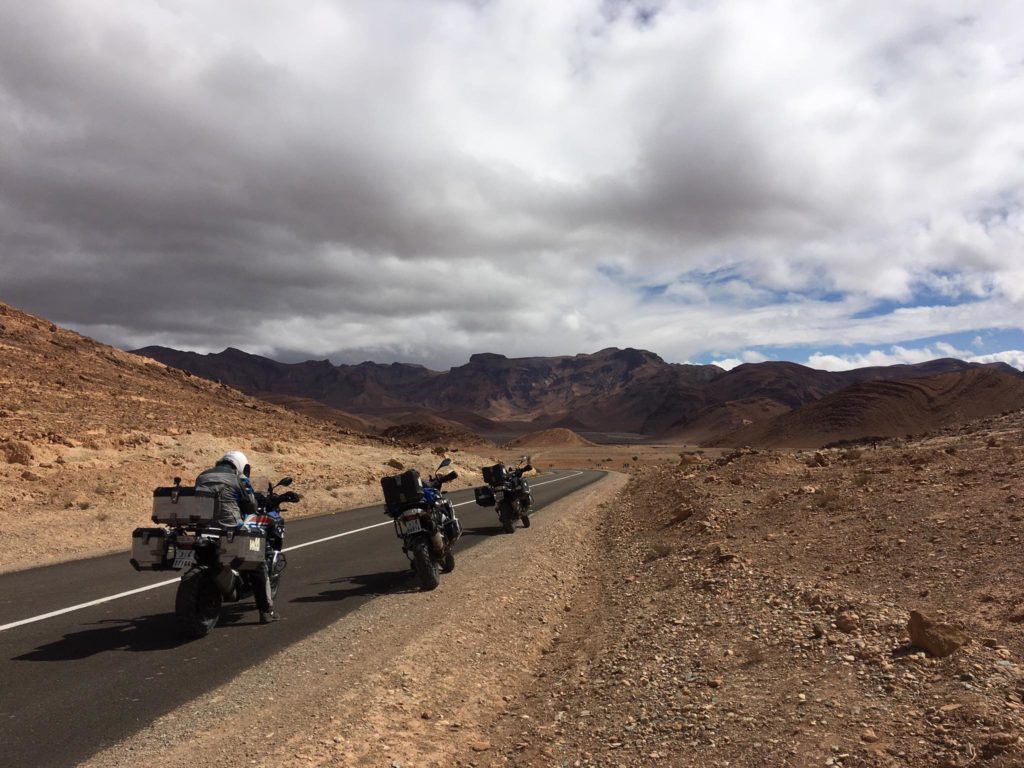
We turned off the highway onto a gravel road and after a couple of dozen kilometres we reached a checkpoint with a "MILITARY ZONE" poster. A man with a machine gun looked at us unkindly. We were turned back. So we went on a detour through the desert. Sand, stones and the soil were very similar to the Mongolian steppe. About an hour later there appeared an oasis on the horizon. The tall palm trees and mud-brick primitive houses made up a small village in the middle of the desert. We saw no people at all.
We made a stop by the house on the outskirts, which looked like a box smeared with clay. It had one slanting door and small windows with iron shutters. A few minutes later a young Arab went out and invited us to come with a gesture.
Having exchanged glances, we agreed. We came into the house, which looked quite empty inside. Then we proceeded to a large room, where we also saw nothing except for the carpets and pillows on the floor. A young Arab offered us a cup of tea. Suddenly there appeared another man, whose legs and one arm were chained together. We looked at each other and an anxious tension hung in the air. Who is he? Why is he chained up? Meanwhile, a young Arab arranged a tricky Moroccan tea ceremony. Then an elderly Arab with a long beard and in a robe came, greeted us and sat down nearby. Unfortunately, they spoke Arabic and French only, so our conversation was conducted by gestures. An elderly woman came in and offered us something to eat. We politely declined the proposal, treating ourselves to delicious herbal tea and dates only. The hosts were very friendly and the chained man was present there all the time too. They categorically refused the money offered and sprayed us with some very fragrant incense when we were about to go. We left this place with ambiguous feelings. On the one hand, they were very hospitable and friendly. But on the other hand, we still did not understand why that guy was chained up. May it have been a kind of punishment for some violation?
We went further into the desert and in a couple of hours we stopped at the next checkpoint. There we had to pass the document verification. When the people in uniform found out that we were from Russia, they smiled, pronounced our president's name and allowed us to go, wishing to have a nice trip. And again we experienced the desert, sand, mountains, rocks and a small river… We reached Teesside at dusk.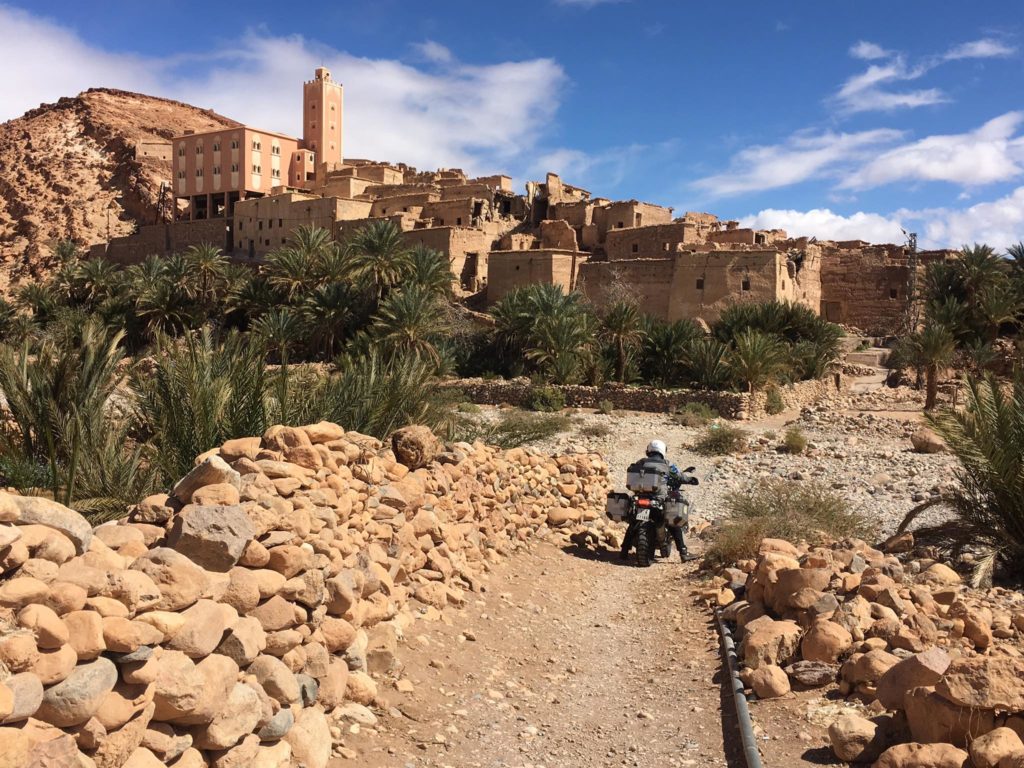
Morocco, 2018. The Sahara.
The small village called Mhamid is located at the very beginning of the Sahara desert. The bed of a dried-up river passes through it and although there is no river itself now (we saw only the rocks and the outline of the banks), there must be water somewhere.
Palm groves surround this oasis from all sides. They save the village from the desert, which tries to absorb it on a daily basis along with primitive clay houses, shops, donkeys and people. The dunes are coming closer to the buildings, slowly crawling into the alleys and even encroaching on the main street! And such a struggle of man with nature has been going on here for hundreds of years. The man currently wins. People are conquering new territories from the desert; laying roads and building new cities and hotels on them.
We parked our "iron horses" at one of these oasis hotels. Well, it is possible to ride them along the dunes of flour-like sand, but that wouldn't last for long. A heavy motorbike is not the best means of transport
in the desert, as it rather resembles physical exercises, when you lift weights. Therefore, we decided to choose a more convenient transport. So the light quad bikes were racing over the dunes, like scarabs, and we easily climbed by them to the tops, which offered striking views of the endless sandy sea, the Sahara desert.
On our way back we were caught in a sandstorm. That's not a pleasant thing at all. It storms so strongly that nothing is visible at a distance of ten metres. Sand gets clogged everywhere: in eyes, ears, mouth, under clothes and shoes. And afterwards it keeps creaking on your teeth for a long time.
That's why locals (the Berbers) wear long robes and are wrapped in headscarves, both women and men.
Souk is a bazaar in Arabic. There's at least one bazaar in every town, but if you visit the market of Essaouira, Marrakech or Agadir, then you will surely get an impression of the oriental bazaar. But there everything is done mostly for tourists (which can be understood). And today we were at a real Berber market in the small town called Rissani…
We were at the market, where there were no tourists and we wouldn't be bothered by sellers of souvenirs, fake brands and other stuff. Here you can buy everything from oriental spices to camels. This is the woman, in total black look, that is sorting out huge bunches of some kind of greenery. This is the Arab that is dragging a huge cart loaded with newly purchased sheep. And these are the long counters filled with fruits and vegetables. While I was passing by the butcher stands, I stopped to take a look at a huge leg suspended on a hook. Apparently, it belonged to a camel.
At the market, you can have your hair cut, a new piece of clothes will be sewn, a knife will be forged or a plate and spoon will be cut out of wood right in front of you. It is interesting to watch how the trade is going. Here are two Berbers, a seller and a buyer, who are trying to negotiate on the price of a sheep. This loud and emotional conversation full of gestures and indescribable facial expressions is just a show! The buyer went away three times (or rather, pretended to do it) and the seller kept returning him until they shook hands.
By the way, an average sheep costs 300 dirhams (which equals 1800 roubles) here. The price of a camel starts from 70 thousand roubles. A kilogramme of tangerines costs 60 roubles as well as a kilogramme of huge strawberries. But these prices are quite conditional: you can discount them much if you are good at bargaining.
Since I had no opportunity to take a camel or a sheep with me, I bought a rusty metal figurine from the seller of antique things. He claimed that it was a real antique thing stolen from the tomb of some pharaoh. He wanted 400 dirhams for it, but we negotiated on 250. It was quite expensive, of course. But, on the other hand, the figurine is for sure antique! :)
This is how the streets of small towns in southern Morocco look like. The residential quarters, so to speak.
Morocco is far from being the poorest country in Africa. But the difference between its north and south (as well as the difference between large cities and small villages) is huge!
A typical Moroccan village can be described as one main street, along which you can see all the "attractions": cafés, shops and tire services placed in garages. There is usually a mosque with a minaret. And in parallel to this street there is one or two more with residential buildings and outbuildings placed close to each other. The streets can be so narrow that it is impossible for two motorbikes to go together. The houses are mostly built from handmade blocks that are made of a mixture of clay, sand and straw. Overlays came from palm trees and untreated trunks of some trees. The exterior walls are not painted, so 90% of residential buildings are of the same brown colour. Everything looks very poor. There are a lot of children in the streets and you can also see many men and women doing nothing. They sit right on the ground with their legs tucked under them and are engaged in a very serious business, which is watching people passing by.
The Moroccan children are absolutely uninhibited. When we were riding through the villages, they ran out of the houses in order to meet us, shouting something and waving their hands.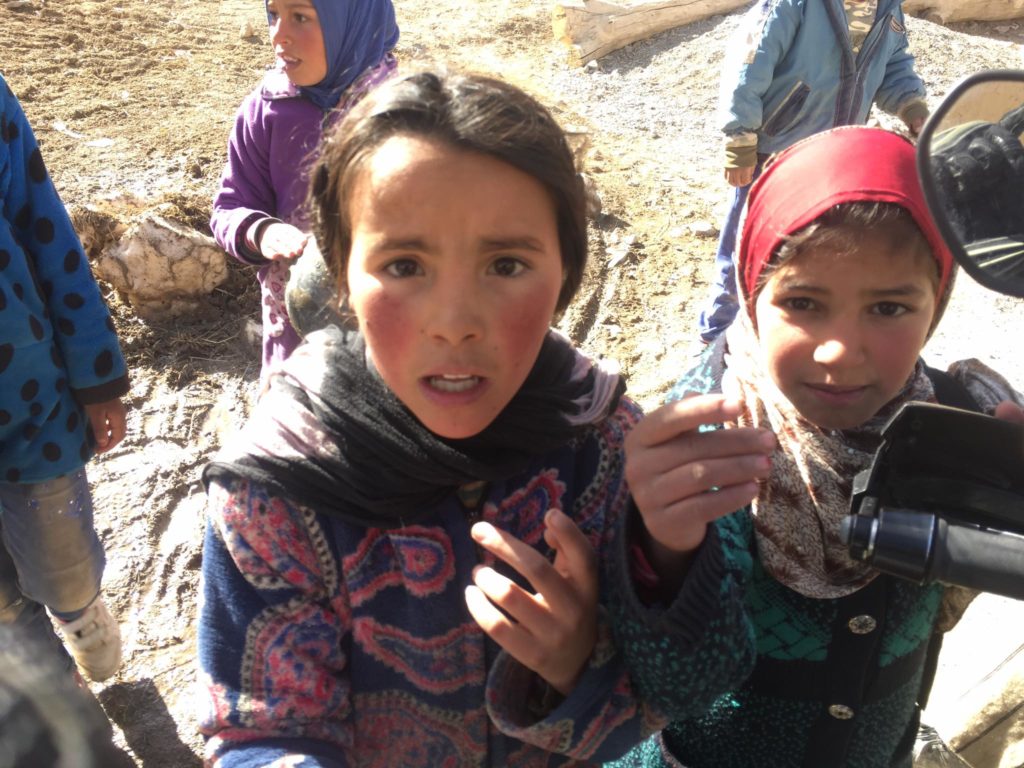
The houses almost have nothing inside except for a portrait of the king on the wall and carpets and pillows on the floor. There are loads of garbage almost everywhere. Many adults and children are not shy to come up and hold out their palm, asking for money. And if you give them a coin, they will ask for more.
Women all wear some kind of awkward baggy robes with their head covered or black burqas, which reach their feet and completely hide the whole body and face. Men often wear robes made of coarse fabric with a pointed hood. Unlike in Central Asian republics, I have seen not a single woman in a beautiful dress.
The most common and multifunctional means of transport in the rural areas and in small towns are mopeds or donkeys.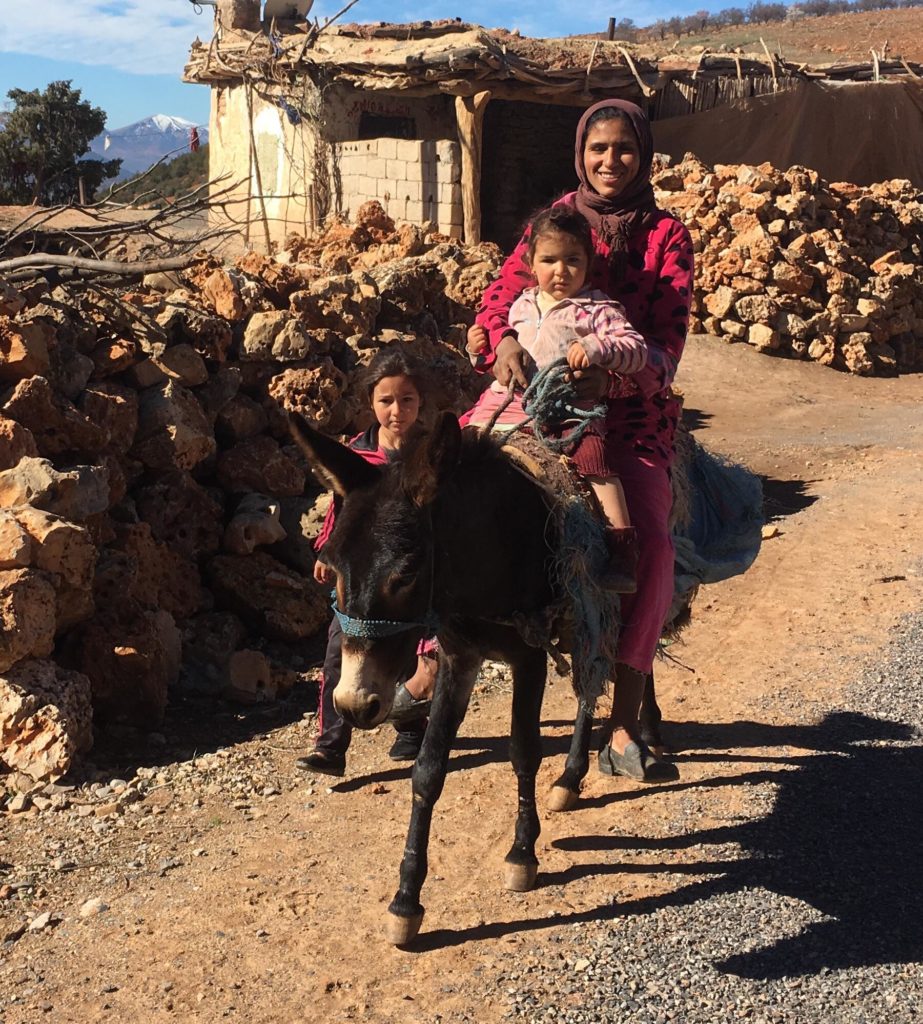
These sad animals are ridden or harnessed to carts and carry various loads. On the territory near the desert and in the Sahara itself, you can often see herds of single-humped camels, which are mainly grown for meat and are also used for tourists' rides (and in this area there are as many tourists as donkeys and camels together). The most numerous are the herds… no, the arranged groups of Chinese tourists, who tend to be brought here by huge coaches. A popular tourist destination is the town called Merzouga, which is located right at the foot of high sand dunes. As soon as you enter the town, a local resident will appear out of nowhere and offer you various services: accommodation, food, excursions to the desert by camels, ATVs, jeeps and even on foot. It won't be so easy to get rid of him. But such an intrusive oriental service and "active sales" are common only in places full of tourists. If you take a turn off the beaten tourist track and ride away from big cities, you will see how people's behavior immediately changes: they become simpler, more modest and guileless. Actually, Morocco isn't an exception in this regard.
Morocco, 2018
Morocco has a very tasty and varied cuisine. You definitely won't stay hungry here. In a café or a small restaurant, which you can find in every village, you can have a decent lunch and pay about 100 dirhams (600 roubles) for it.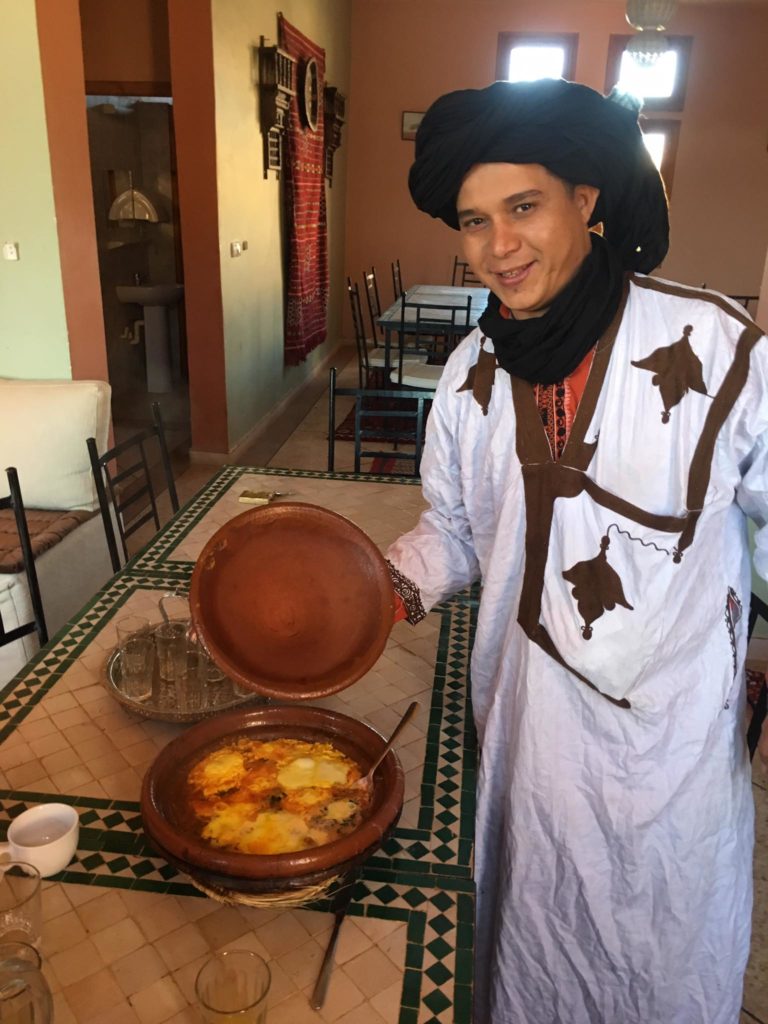
For this price you will be offered, for example, tajine, a national dish, which is cooked in a special clay plate with a cone-shaped lid and consists of meat stewed with large sliced pieces of vegetables, raisins, herbs and spices. It takes 1.5…2 hours to cook it. There are many types of tajine depending on the type of meat and other ingredients. You will also have a vegetable salad, a very tasty flatbread with butter, honey, jam and Moroccan green tea with mint, which is brewed in a small metal kettle. It is served in a glass cup and with a piece of sugar attached to it. If you are lucky to be invited for a visit, then you will be able to see the process of making this divine drink. It really looks like a long tea ceremony!
Morocco, 2018
The roads.
Travelling across Morocco by car or by motorbike is a pleasure! A fairly developed road network covers the whole country and the asphalt is close to be spoken of as a perfect one. There are toll expressways. In the south of the country the highways have minimal traffic. We often wondered who they were constructed for!
You can ride one or two dozen kilometres without facing a single passing or oncoming car. The local traffic police are on duty on the highways, especially in populated areas. They measure the speed, but just ignore travellers on motorbikes. At best they may greet them with a wave of a hand or rather would not pay attention at all. We have ridden about 2800 km across Morocco and have never been stopped for checking the documents or because of some traffic violations (although, to be honest, the latter did take place). But is it possible to ride at a speed of 90…110 km/h along the highway that is as straight as an arrow? In this regard, Morocco is similar to Iran, but drivers here are more law-abiding. Nevertheless, in cities you have to be careful, since there are a lot of motorcyclists and horse-drawn carts moving along the roads without any rules at all.
We experienced very beautiful paths in the Atlas Mountains, including steep walls of gorges, precipices, serpentines, fascinating landscapes and even some snow on the passes! Snow and Africa were two incompatible concepts for me, but that's because I hadn't seen a lot before… :)
Gasoline in Morocco costs around 70 roubles per litre. There are a lot of petrol stations, located almost everywhere. 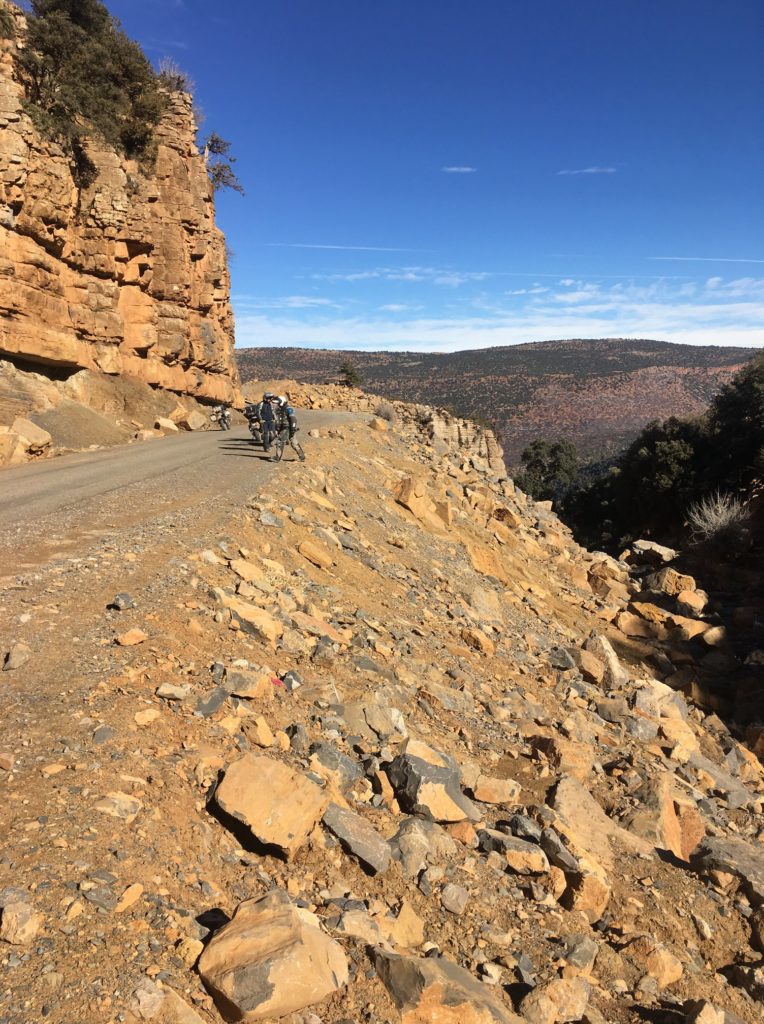
Morocco, 2018
Marrakesh.
We arrived in Marrakech in the evening. The weather turned bad and it had been raining for several hours, but despite this fact, the streets of the city were crowded with people. A small private hotel of four rooms, which we had booked on Booking.com, was located in the centre of the old town called Medina. We spent an hour trying to find it ourselves, but it turned out to be a serious challenge. We had to ask a young guy for help and he led us through the labyrinth of narrow streets. In some places they were so narrow that two donkeys would not be able to pass by each other.
Within ten minutes the hotel was found and I handed our "conductor" a 100 dirham (600 roubles) bill, as a sign of gratitude, thinking that it was a very good reward. But this guy without any hesitation took the money and said that his service cost 200 dirhams. In response I took back the hundred-dirham bill and told him in Russian to bugger off.
The entrance to the hotel looked like an old wooden door in the wall with a small brass plate above it. But inside it appeared to be a genuine oriental rich house with a courtyard and a swimming pool.
Marrakesh is one of the four biggest cities in Morocco with a population of about one million people. It is famous for its Medina, probably the largest in the world. It is an old town surrounded by a fortress wall and it feels like a huge labyrinth of alleys, streets, dead ends and crossroads. There is one large central square named Jemaa el-Fnaa. The biggest part of the city is occupied with a huge oriental bazaar. Everything is sold here: from food and clothes to carpets and souvenirs. There are also musicians, snake tamers, acrobats and other performers, who make their show on the square.
As soon as you make a stop at one of these improvised scenes, one of the performers will immediately run up to you with an outstretched hand, demanding money. Tourists here are tried to be cheated by everyone: from beggars to sellers who sell their goods with a five-tenfold mark-up. In order not to be deceived, you should know how to bargain and simply ignore those who want to make a fortune, doing nothing, by means of your expense. And there are a lot of such volunteers…
Nevertheless, Marrakesh keeps impressing with its indescribable oriental flavour and spirit, which permeates every stone in this amazing ancient city.
 Cap-travel.ru
Cap-travel.ru